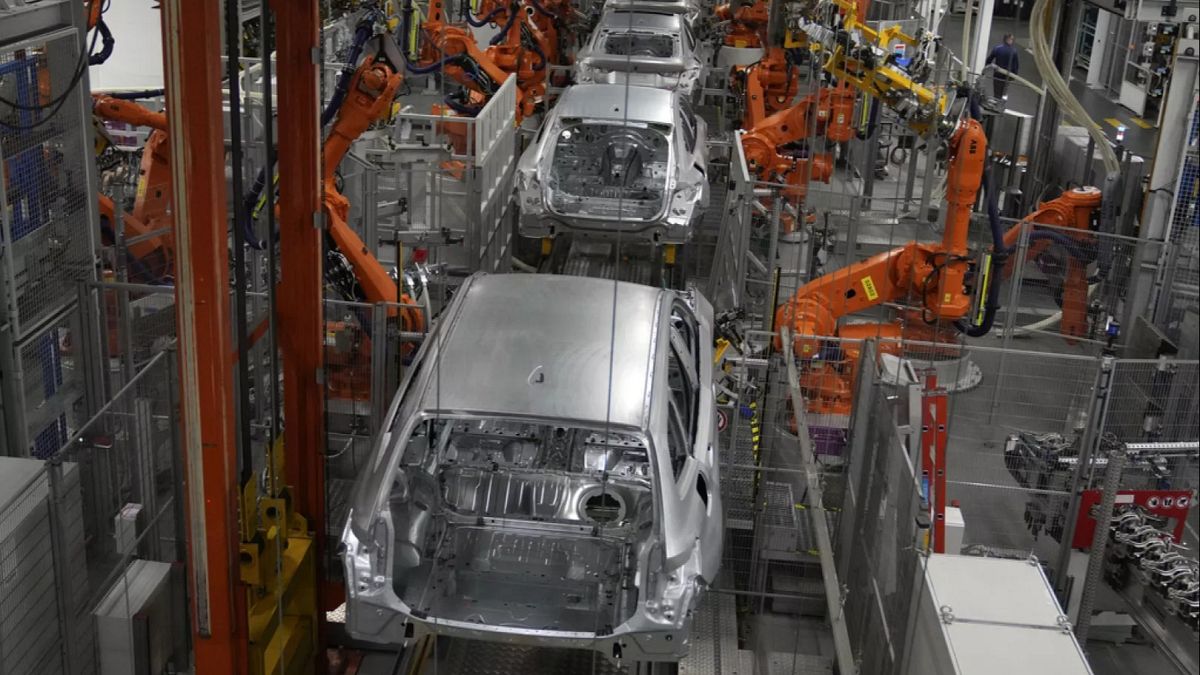Heightened global policy uncertainty and trade tensions are overshadowing the European Union’s economic growth prospects. The European Commission revised its outlook for the eurozone to 0.9% from the previous forecast of 1.3% in November. For 2026, the eurozone is expected to expand by 1.4% instead of the previously expected 1.6%.
The EU is forecast to keep growing at a modest rate this year, at 1.1%. The EU’s executive body forecast that growth will pick up in 2026 and reach 1.5%. The Commission said this on Monday in its spring forecast.
The sharp slowdown in global trade, fuelled by global tensions, will leave its mark on Europe, too. The Commission is expecting EU exports to grow by only 0.7% this year, with a renewed contraction in exports of goods partially offset by the resilience of services exports, as they are less affected by trade tensions. In 2026, export growth is set to accelerate to 2.1%.
Investments are expected to pick up this year, and private consumption is forecast to be slightly more robust than projected in autumn, reaching 1.5% in 2025 and 1.6% in 2026.
Inflation is expected to slow down, with headline inflation descending to 2.1% in the eurozone in 2025 and further to 1.7% in 2026. In the EU, prices are expected to follow a similar path, falling just below 2% in 2026.
The European Commission highlighted that the labour market remains robust, and it expects the unemployment rate to hit a record low of 5.7% in 2026.
How are the strongest economies performing?
One reason for the lower growth estimate is due to Germany’s stagnating economy, where growth is expected to be zero this year after two years of shrinking output.
The EU’s largest economy is heavily dependent on exports but has faced strong headwinds from higher energy costs after the loss of Russian natural gas due to the invasion of Ukraine, as well as from a lack of pro-growth infrastructure spending and competition from China in autos and industrial machinery.
France, the second-biggest economy in the bloc, is set for 0.6% growth this year, followed by 1.3% in 2026, while Spain is expected to have GDP growth of 2.6% this year.
The best performing economies in the EU include Poland, Ireland, Denmark and Malta this year.
How US trade tariffs are hitting the European economy
The proposal for a 20% US tariff on imported goods from Europe, in addition to its suspension for 90 days, has meant uncertainty “not seen since the darkest days of the COVID-19 pandemic,” Economy Commissioner, Valdis Dombrovskis, said.
The European Commission’s forecast assumes that the proposed 20% rate can be reduced through negotiations with Washington to the base tariff rate imposed on all countries of 10%.
While the EU’s top trade official, Maros Sefcovic, has spoken several times with administration officials, it remains uncertain how willing Trump might be to reduce the rate.
The forecast assumed that 25% tariffs on steel and autos from all countries will remain in place, as would exemptions on computer chips and pharmaceuticals.
The report says that further fragmentation of global trade and climate-related disasters could hit the EU’s GDP growth further and reignite inflationary pressures.
On the other hand, the EU’s economy could expand more than expected if the EU-US trade tensions de-escalate faster than expected. Meanwhile, quicker expansion of the EU’s trade with other countries, as well as increased defence spending, could also improve the bloc’s economic prospects.

